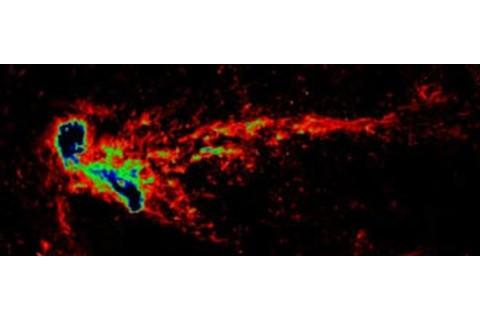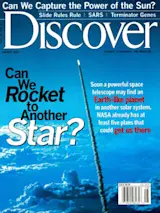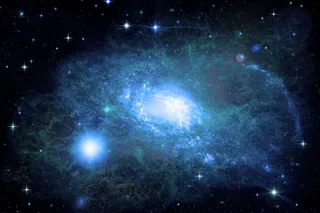Like hunters tracking their prey through the forest, astronomers are retracing the movements of galaxies by following what they leave behind—a skill that has solved a 40-year-old cosmological puzzle. In the 1960s, radio telescopes revealed hundreds of gas clouds zipping around the Milky Way at unusual speeds. Some scientists later theorized that these "high-velocity clouds" are large clumps of hydrogen and dark matter that never gathered together to form a galaxy, relics from the early days of the universe. Mary Putman, an astrophysicist at the University of Colorado, finds just the opposite. The clouds are flecks of debris shed recently from small, nearby galaxies, she says.
Using the Parkes radio telescope in Australia, Putman and her colleagues originally set out to map the Magellanic Stream, a flow of hydrogen ripped from the Milky Way's two major satellite galaxies. Along the way, the researchers found that high-velocity clouds have many of the same characteristics as the Magellanic Stream. The clouds appear to glow in response to light from our galaxy and seem to interact with our galaxy's halo, which suggests they are much closer than scientists previously thought. If so, they are too nearby to be the building blocks of galaxies. They may simply be outlying bits of the Magellanic Stream, so scattered that nobody could trace their origin until now. The clouds still play a role in cosmic evolution. "I think they provide fresh gas for galaxies," Putman says. The gas spurs on the next generation of stars, helping to keep the Milky Way young and vibrant.

A radio map of the southern sky shows extensive streamers of hydrogen trailing behind the two Magellanic Clouds (left), our satellite galaxies. Photograph courtesy of M.E. Putman (University of Colorado), L. Staveley-smith (CSirO), K.C. Freeman (Australian National University), B.K. Gibson (Swinburne University), David G. Barnes (Swinburne University).














